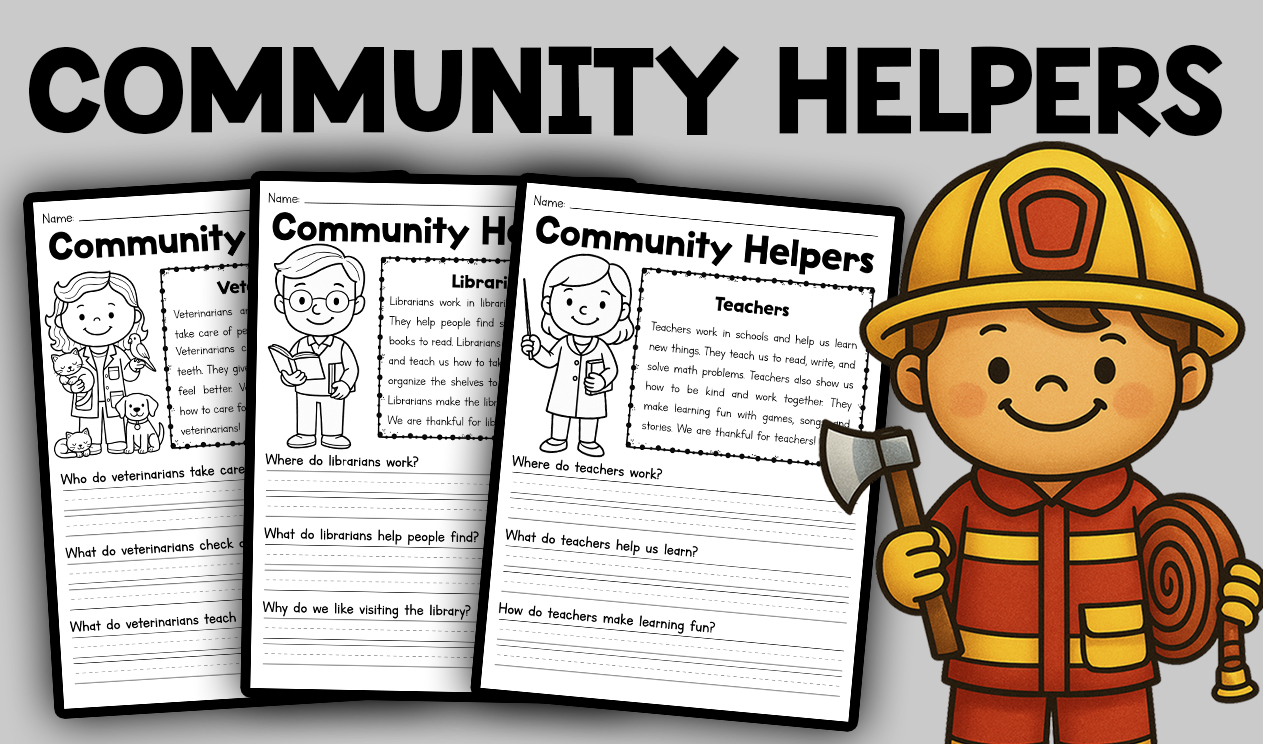Last month, I introduced community helpers to my first graders, and let me tell you, our classroom was full of questions. “What does a park ranger do?” “Do scientists wear lab coats every day?” This set of 24 short reading passages helped channel all that curiosity into focused reading time.
It’s designed with 1st and 2nd grade learners in mind, and the structure couldn’t be easier to work with: each passage is just seven sentences long, written in clear, accessible language that emerging readers can handle with growing confidence.

What’s inside?
Each one-page reading passage focuses on a different community helper. After reading, students answer three comprehension questions—simple, text-based ones that check for understanding and encourage close reading.
Some of the helpers included are:
- Firefighters
- Librarians
- Chefs
- Construction workers
- Veterinarians
- Teachers (always fun when they read about you)
…and many more! There are 24 in total, so you’ve got enough material to cover several weeks or build thematic units.
How I’ve used it in my classroom
I started using this resource during our nonfiction block, but it quickly found its way into:
- Small group instruction (especially for targeting comprehension strategies)
- Morning work (quiet, purposeful, and independent!)
- ELA centers
- Homework
- Sub plans (because it’s print-and-go and doesn’t need extra explanation)
One of my favorite ways to extend the activity is to have students draw a picture of the helper in action or write a thank-you note to one of the helpers we’ve read about. These little additions make the reading feel more personal—and meaningful.
What skills are we working on?
Besides broadening students’ understanding of community roles, this resource supports:
- Reading fluency
- Comprehension and recall
- Vocabulary development
- Making real-world connections
The predictable structure also helps students build reading stamina. By the second or third passage, they know what to expect and start to feel more confident navigating the format.

